Soil erosion poses a significant threat to agricultural and forestry practices worldwide, jeopardizing the productivity of land and causing irreversible damage to ecosystems. In recent years, there has been growing concern over the escalating rates of soil erosion and its detrimental effects on food security, water quality, and biodiversity conservation. To address this pressing issue, various methods and strategies have been developed to prevent or mitigate soil erosion in agriculture and forestry. This article aims to explore these approaches through an academic lens, examining their effectiveness, benefits, and potential challenges.
In one notable case study, the adoption of contour plowing in hilly regions demonstrated remarkable success in preventing soil erosion. Contour plowing involves tilling parallel to natural slopes instead of up-and-down rows. By following the contour lines of the land, farmers create small ridges that act as barriers against runoff water and effectively reduce surface erosion. This technique not only preserves topsoil but also enhances moisture retention capacity by minimizing water loss through runoff. Such practical examples provide valuable insights into effective methods for mitigating soil erosion while optimizing agricultural production.
To combat soil erosion comprehensively, it is crucial to understand both the causes behind this phenomenon and the diverse range of preventive measures available. Consequently, this article will delve into key strategies such as implementing cover crops, terracing, agroforestry, and conservation tillage. These approaches have been widely recognized for their ability to reduce soil erosion and promote sustainable land management practices.
Cover cropping involves planting a temporary crop during the fallow period between cash crops. The cover crop’s dense root system helps bind the soil together, preventing erosion caused by wind or water. Additionally, cover crops also enhance soil fertility by fixing nitrogen and increasing organic matter content. This practice not only reduces soil erosion but also improves overall soil health and productivity.
Terracing is another effective method for controlling soil erosion in hilly or sloping areas. It involves constructing level platforms on the slope to create flat areas that can hold water and prevent it from flowing rapidly downhill. By reducing the speed of runoff and allowing more time for infiltration, terraces help minimize erosion caused by water movement. They also provide additional benefits such as increased water availability and improved accessibility for farming activities.
Agroforestry combines trees with agricultural crops or livestock production systems to achieve multiple benefits, including erosion control. Trees act as windbreaks, reducing wind velocity and minimizing soil loss through surface erosion. Their deep root systems stabilize the soil, preventing landslides or gully formation on steep slopes. Agroforestry systems also enhance biodiversity by providing habitat for various species and contribute to climate change mitigation through carbon sequestration.
Conservation tillage practices involve minimizing or eliminating traditional plowing methods that leave bare soils exposed to erosive forces. Instead, techniques like no-till farming or minimum tillage are employed to disturb the soil less while still enabling seedbed preparation. By leaving crop residues on the field or planting directly into previous crop residue, conservation tillage protects against raindrop impact and reduces both water runoff and wind erosion.
While these strategies offer promising solutions for mitigating soil erosion, their successful implementation may face certain challenges. Farmers may require technical support and training to adopt these practices effectively. Economic constraints, such as the cost of implementing new techniques or purchasing equipment, can also hinder widespread adoption. Additionally, cultural and social factors might influence farmers’ willingness to change their traditional farming methods.
In conclusion, addressing soil erosion in agriculture and forestry requires a multifaceted approach that considers both the causes and preventive measures available. Strategies like contour plowing, cover cropping, terracing, agroforestry, and conservation tillage have shown positive results in reducing soil erosion while promoting sustainable land management practices. However, overcoming challenges related to knowledge transfer, economic limitations, and sociocultural factors is essential for widespread adoption and long-term success in mitigating soil erosion.
Understanding the Causes of Soil Erosion
Soil erosion is a significant environmental issue that poses numerous challenges to agriculture and forestry. By comprehending its causes, we can develop effective strategies for preventing soil loss and preserving our valuable natural resources.
To illustrate the impact of soil erosion, let us consider a hypothetical scenario in which a region heavily reliant on agriculture experiences severe erosion due to improper land management practices. The consequences are devastating: fertile topsoil washes away, leaving behind infertile subsoil; crops fail to thrive, leading to reduced yields and economic losses; water bodies downstream become contaminated with sediment, affecting aquatic life and human health. This example highlights the dire need for understanding the causes of soil erosion and taking appropriate measures to prevent it.
Several factors contribute to soil erosion. First and foremost, excessive rainfall or flooding amplifies erosive forces by increasing runoff rates. Secondly, deforestation removes protective vegetation cover, making the exposed soil vulnerable to erosion caused by wind and water. Additionally, intensive agricultural practices such as overgrazing and improper plowing techniques disturb the soil structure, making it more susceptible to erosion. Lastly, steep slopes exacerbate the erosive power of gravity-driven processes like sheet erosion and gully formation.
To evoke an emotional response from readers regarding the impacts of soil erosion, consider these points:
- Loss of productive farmland leads to food scarcity.
- Degraded ecosystems reduce biodiversity.
- Sedimentation in rivers reduces their capacity for flood control.
- Contaminated water sources pose risks to both humans and wildlife.
In addition to understanding the causes of soil erosion through illustrative examples and emotive bullet points, it is helpful to present information in a clear format like tables. Here is an example:
| Factors Contributing to Soil Erosion | Impact |
|---|---|
| Excessive rainfall or flooding | Increased runoff rates |
| Deforestation | Removal of protective vegetation cover |
| Intensive agricultural practices | Disturbance of soil structure |
| Steep slopes | Gravity-driven erosive processes |
By comprehending the causes and impacts of soil erosion, we can implement effective strategies to prevent further degradation. In the subsequent section on implementing sustainable land management practices, we will explore various techniques that address these concerns while promoting long-term environmental sustainability.
The transition from this section to the next can be achieved by emphasizing the importance of taking action: “Understanding the causes of soil erosion is crucial; however, it is equally important to implement sustainable land management practices that mitigate these factors and preserve our natural resources.”
Implementing Sustainable Land Management Practices
Understanding the Causes of Soil Erosion revealed various factors that contribute to this detrimental process. In order to combat soil erosion effectively, it is crucial to implement sustainable land management practices that address these underlying causes. This section will explore some methods and strategies for preventing soil erosion in agriculture and forestry, with a focus on practical approaches that have proven successful.
To illustrate the importance of implementing preventive measures, let us consider a hypothetical case study involving an agricultural farm situated on sloping terrain. Without proper erosion control measures, heavy rainfall can cause significant topsoil loss from the farm’s fields. The eroded soil particles may then be carried away by runoff water into nearby streams or rivers, polluting the water bodies and degrading their quality. This scenario highlights the need for proactive steps to prevent soil erosion and protect both agricultural productivity and environmental sustainability.
Several effective methods and strategies exist for mitigating soil erosion risks in agriculture and forestry:
- Contour plowing: Plowing along the contour lines of sloping land helps slow down water flow across fields, reducing its erosive force.
- Terracing: Creating terraces involves constructing horizontal platforms on steep slopes to form flat surfaces where crops can be grown. These terraces act as barriers against runoff water, allowing it to infiltrate slowly into the ground.
- Cover cropping: Planting cover crops such as legumes or grasses during fallow periods provides vegetation cover that protects bare soil from erosion caused by wind or rain.
- Mulching: Applying organic mulch materials like straw or wood chips onto cultivated areas helps retain moisture in the soil while also reducing surface runoff.
The table below further illustrates how these methods compare based on their effectiveness, cost-effectiveness, ease of implementation, and compatibility with different agricultural systems:
| Method | Effectiveness | Cost-effectiveness | Ease of Implementation |
|---|---|---|---|
| Contour plowing | High | Moderate | Easy |
| Terracing | Very high | Low | Moderate |
| Cover cropping | Moderate | High | Easy |
| Mulching | Moderate | Moderate | Easy |
By implementing appropriate methods based on the specific needs and characteristics of their agricultural or forestry operations, land managers can effectively prevent soil erosion. This proactive approach not only safeguards the health of soils but also helps maintain biodiversity, water quality, and long-term productivity.
In transitioning to the subsequent section about “Conservation Tillage Techniques,” it is important to acknowledge that while preventing soil erosion through sustainable land management practices is crucial, conservation tillage techniques offer additional benefits by reducing soil disturbance during cultivation. These techniques will be explored in detail in the following section.
Conservation Tillage Techniques
Preventing Soil Erosion through Conservation Tillage Techniques
Building upon the sustainable land management practices discussed earlier, implementing conservation tillage techniques is crucial in preventing soil erosion and maintaining long-term agricultural and forestry productivity. By reducing soil disturbance during planting and cultivating operations, these methods ensure that the precious topsoil remains intact, providing numerous benefits to both the environment and farmers.
One example of successful implementation is the case study conducted on a farm in Iowa, where traditional plowing was replaced with no-till farming. The results indicated a significant reduction in soil erosion rates by up to 90%. This approach not only conserved valuable soil resources but also led to improved water quality and increased organic matter content in the soil.
To effectively tackle soil erosion, it is essential for farmers and foresters to adopt various conservation tillage techniques. Some key strategies include:
- No-till farming: In this technique, seeds are directly planted into untilled or minimally disturbed soil, preserving its structure and minimizing runoff.
- Mulch tillage: Incorporating crop residues (such as straw or leaves) into the upper layer of the soil acts as a protective barrier against erosive forces while promoting nutrient cycling.
- Strip cropping: Alternating rows of different crops can create physical barriers that reduce water velocity and wind exposure, thus preventing erosion.
- Cover cropping: Planting cover crops during fallow periods helps maintain ground cover throughout the year, stabilizing the soil surface and enhancing organic matter content.
By adopting these conservation tillage techniques, farmers can experience multiple advantages such as reduced production costs due to decreased fuel consumption and labor requirements. Moreover, enhanced moisture retention capabilities lead to improved drought resilience and higher yields over time.
| Conservation Tillage Technique | Benefits |
|---|---|
| No-till farming | – Minimizes soil disturbance- Improves water infiltration- Enhances carbon sequestration |
| Mulch tillage | – Protects soil from erosion- Promotes nutrient cycling- Improves soil structure |
| Strip cropping | – Reduces water velocity and wind exposure- Prevents erosion by creating physical barriers- Enhances biodiversity |
| Cover cropping | – Maintains ground cover throughout the year- Stabilizes the soil surface- Increases organic matter content |
As we delve further into effective strategies for preventing soil erosion, the next section will focus on establishing contour farming and terracing. These techniques build upon the foundation of conservation tillage to ensure sustainable land management practices in agriculture and forestry.
Note: The subsequent section about “Establishing Contour Farming and Terracing”
Establishing Contour Farming and Terracing
Section H2: Conservation Tillage Techniques
Transition: Building upon the importance of conservation tillage techniques, this section will delve into another effective method for preventing soil erosion – establishing contour farming and terracing.
To illustrate the impact of contour farming and terracing, let’s consider a hypothetical scenario. Imagine a sloping agricultural field prone to significant runoff during heavy rainfall. Without proper measures, valuable topsoil would be washed away, negatively affecting crop yields and overall land productivity. However, by implementing contour farming techniques, farmers can create ridges across the slope that follow the natural contours of the land. This helps slow down water flow, reducing erosion and allowing it to infiltrate the soil more effectively.
Contour farming is often complemented by terracing – an additional technique used on steeper slopes. By constructing level platforms or steps along the hillside, terraces help break up long slopes into smaller sections, further minimizing water velocity and promoting sediment deposition. Together with contour farming, terracing acts as an essential safeguard against soil erosion in areas where traditional flat cultivation practices may prove ineffective.
The benefits of establishing contour farming and terracing are manifold:
- Reduced surface runoff: The combination of these techniques significantly decreases surface runoff by slowing down water movement over sloping terrain.
- Enhanced water infiltration: By mitigating erosion through increased roughness provided by ridges and terraces, water has more time to penetrate into the soil profile.
- Improved moisture retention: Contours capture rainwater within fields rather than letting it escape downhill, leading to enhanced moisture availability for crops.
- Preserved nutrient content: With reduced soil loss due to erosion, vital nutrients remain intact within reach of plant roots.
| Benefits | Explanation |
|---|---|
| Reduced surface runoff | Slowing down water movement over slopes minimizes the amount of runoff. |
| Enhanced water infiltration | Increased roughness provided by ridges and terraces allows more time for water to penetrate soil. |
| Improved moisture retention | Capturing rainwater within fields helps retain moisture, benefiting crop growth. |
| Preserved nutrient content | Less soil loss due to erosion ensures essential nutrients remain available for plant roots. |
With contour farming and terracing established as effective techniques in preventing soil erosion, the subsequent section will focus on another vital method – planting cover crops for soil protection. By incorporating these strategies together, farmers can create a holistic approach to preserving their land’s health and productivity.
Please let me know if there is anything else I can assist you with!
Planting Cover Crops for Soil Protection
Preventing Soil Erosion through Planting Cover Crops
In the previous section, we examined the effectiveness of establishing contour farming and terracing in preventing soil erosion. Now, let us explore another important measure: planting cover crops. To illustrate its significance, consider a hypothetical scenario where a farmer in Iowa decides to implement this practice on their cornfield.
By planting cover crops such as winter rye or clover during the fallow period, farmers can significantly reduce soil erosion. These crops provide ground coverage that protects the soil from wind and water erosion by intercepting raindrops and reducing surface runoff. In our case study, the Iowa farmer noticed a remarkable decrease in sediment loss after adopting this method. This success story highlights the potential benefits that planting cover crops can offer.
To fully grasp the advantages of this technique, here are four key reasons why planting cover crops is crucial for soil protection:
- Enhanced soil structure: The roots of cover crops penetrate deep into the soil, creating channels that improve water infiltration and prevent compaction.
- Nutrient retention: Cover crops absorb excess nutrients like nitrogen and phosphorus, preventing them from leaching into groundwater or running off into nearby bodies of water.
- Weed suppression: By providing dense vegetation, cover crops compete with weeds for sunlight and nutrients, minimizing weed growth without relying heavily on herbicides.
- Biodiversity promotion: Different species of cover crops contribute to biodiversity by attracting beneficial insects while deterring harmful pests.
The table below presents some popular choices for cover crop selection based on their specific benefits:
| Cover Crop | Benefit |
|---|---|
| Winter Rye | Erosion control |
| Crimson Clover | Nitrogen fixation |
| Buckwheat | Weed suppression |
| Radishes | Soil compaction reduction |
As demonstrated by these examples, selecting appropriate cover crops tailored to specific needs helps achieve effective soil protection outcomes.
In the subsequent section, we will delve into another crucial measure for preventing soil erosion: promoting agroforestry and windbreaks. This approach complements the practices discussed thus far by harnessing the benefits of trees to safeguard agricultural and forestry lands against erosion.
[Transition sentence:] With a firm understanding of planting cover crops, let us now explore the role of agroforestry and windbreaks in preventing soil erosion.
Promoting Agroforestry and Windbreaks
Building on the importance of planting cover crops, another effective method to prevent soil erosion is through promoting agroforestry and windbreaks. By incorporating trees into agricultural and forestry landscapes, farmers and land managers can enhance soil protection measures while reaping additional benefits.
Section H2: Promoting Agroforestry and Windbreaks
For instance, let us consider a hypothetical scenario where an agricultural region experiences frequent strong winds that exacerbate soil erosion. In this case, implementing agroforestry practices by strategically planting rows of trees across farmland can act as natural barriers against wind forces. Not only do these windbreaks provide shelter from high-speed gusts, but they also offer numerous advantages for both crop production and overall ecosystem health.
Benefits of Agroforestry and Windbreaks:
- Enhanced Soil Stabilization: The presence of windbreaks significantly reduces wind speed near the ground surface, minimizing the erosive impact on topsoil. This allows for better moisture retention within the soil profile, improving its structure and nutrient-holding capacity.
- Biodiversity Conservation: Agroforestry systems contribute to habitat creation by providing nesting sites and food sources for various species. Increased biodiversity helps maintain ecological balance and promotes pollination services critical for crop productivity.
- Microclimate Modification: Trees in agroforestry systems create favorable microclimates by reducing temperature extremes and evaporation rates. This moderates temperature fluctuations during frost events or hot spells, mitigating stress on crops.
- Economic Diversification: Besides their protective functions, certain tree species incorporated into agroforestry systems can be cultivated for timber or fruit production. This diversifies income streams for farmers while maintaining sustainable land management practices.
| Benefits of Agroforestry and Windbreaks |
|---|
| Enhanced Soil Stabilization |
| Biodiversity Conservation |
| Microclimate Modification |
| Economic Diversification |
By incorporating agroforestry systems and implementing windbreaks in agricultural landscapes, farmers can protect their soils from erosive forces while simultaneously fostering biodiversity conservation, modifying microclimates, and diversifying economic opportunities. These strategies not only contribute to long-term sustainability but also provide a range of benefits for both the environment and society at large.
(Note: Markdown formatting may not be visible here as this is a text-based interface; please adjust accordingly when using markdown in your document.)


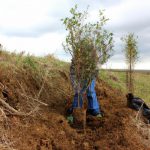
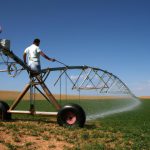
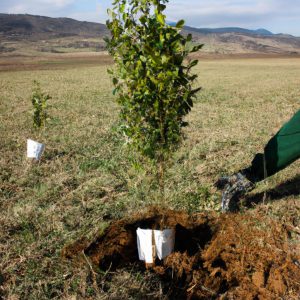
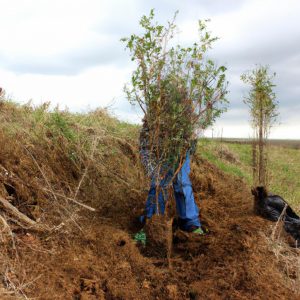
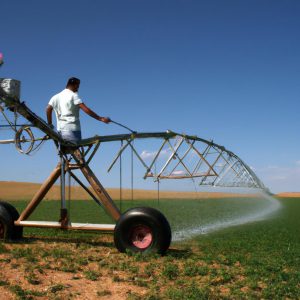
More Stories
Cover Cropping in Agriculture and Forestry: Combating Soil Erosion
Windbreaks in Agriculture and Forestry: Combating Soil Erosion
Conservation Tillage in Agriculture and Forestry: Combating Soil Erosion